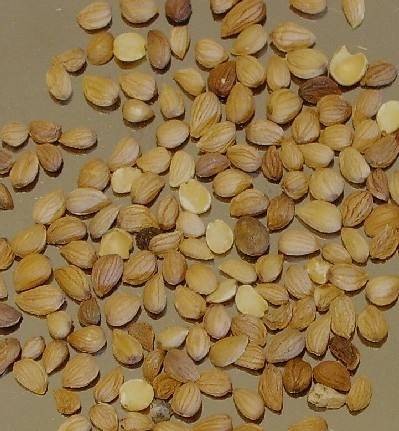Greek name and pronunciation:
Mahlepi, μαχλέπι, pronounced mah-LEH-pee
At the market:
In the U.S., mahlab kernels or powder may be available in larger markets, or in specialty groceries catering to Mediterranean and/or Middle Eastern cuisines. Mahlab may also be marketed as “St. Lucie Cherry Kernels,” or “ground cherry stones.”
Physical characteristics:
Mahlab kernels are 5 to 7 mm long (1/4-inch or less), light tan or beige, similar in shape to a small peanut. They have a rose-scented fragrance and a bitter, almond-like taste.Like other varieties of cherry, the mahlep tree has a very pleasing and aromatic fragrance in spring when the tree’s flowers are in bloom.
Usage:
In Greece, mahlab is used as a flavoring in tsoureki-type sweet breads made at Christmas and Easter, and makes the kitchen smell delicious.
Substitutes:
Ground Chinese almonds, or ground fennel seeds, or cardamom. Alternatively, grind together one 2-inch stick of cinnamon with 3 whole cloves and 1 bay leaf.
Origin, History, and Mythology:
Because gathering and processing mahlab kernels is, at the current time, quite labor-intensive, and the sharp decline in market prices paid to farmers, mahlab products are not as plentiful as they were in the 1970s and 80s. In the U.S., mahlab trees are frequently used as grafting stock for other varieties of cherry trees.

